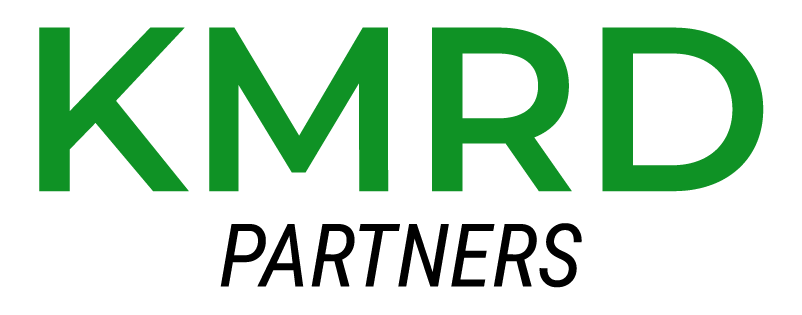Captive Insurance & Risk Management Programs
KMRD can help you evaluate whether you are a good candidate for a captive insurance program.
Better Access
We provide a secure and collaborative environment offering 24/7 access for everyone on your team around the globe.Better Control
We perform a disciplined review across your entire operation to understand all of your company’s exposures.Better Delivery
We take the time to get to know your company and then assign a team that cares about getting it right.What are captive insurance programs?
Captive Insurance Programs come in many different shapes and sizes. Each type has benefits and weaknesses but all give participants access to underwriting profits in exchange for taking on measured risks.
Are you a good candidate for a captive?
Depends. Some will tell you need to be a large company paying in excess $1M for traditional insurance today to consider this approach. This is not true. There are captive programs developed specifically to enable smaller companies to become part of a group of like minded partners with a goal of accessing some of the profits the insurance companies have been earning on their excellent loss experience. Companies with premiums in the $100k to a $1M can be eligible. Of course the risks / rewards become more prominent with larger programs.
Most captives are risk financing vehicles for corporations and high net worth individuals where the conventional insurance market is unable to provide sufficiently flexible, stable and financially attractive terms.
Captive can be established by individuals, corporations or even associations. Many captives have been formed by groups who, when pooling their risks together, may obtain better coverage and terms than they could negotiate individually from a traditional insurance company.
Can you achieve a similar risk / reward structure in the traditional insurance marketplace?
Similar? Yes. Exactly the same? No. Companies paying in excess of $1M for their general liability, auto, and workers compensation programs combined may be able to negotiate pricing structures with their carriers including a level of self insurance delivering the ability for lower costs if losses are good in exchange for taking the risk of higher costs in poor loss years.
They key is to employ an agent who has the expertise in developing these alternatives for you. They should be able to educate you on your “loss picture” and clearly communicate the risks and rewards of such a program. They should also test the marketplace periodically to confirm the structure continues to be the best alternative for you.
What Role Does KMRD Serve?
KMRD is a risk management consultant and commercial insurance broker. We serve as an independent resource in evaluating risk transfer structures. We have extensive experience in performing reviews on existing captives or performing feasibility studi es so our clients understand the potential risk and rewards before they embark on a costly and time consuming process.
es so our clients understand the potential risk and rewards before they embark on a costly and time consuming process.
If our assessment confirms a captive approach is attractive to you, KMRD will assist you with working with select experts in the industry to assist you in accomplishing your goal.
KMRD is one of a very select group of brokers with access to several well-funded property & casualty insurance captives. We can also assist you in exploring a captive approach to your employee benefits through our partnership with Captive Resources and other reputable captive experts. These alternative risk financing techniques are attractive for companies with a risk appetite and the desire to access underwriting profits and tax advantages as an owner of the insurance entity. [MAC Casualty Ltd., Churchill Casualty Ltd., Elite Distributors Insurance Company (EDIC), Pareto Captive Services]
Types of captives
- Wholly Owned / Single Parent Large Captives are established by one company as a way to pre-fund losses and essentially creating their own insurance company to protect themselves from the unknown. These programs include significant up-front startup costs which does not make much sense.
- Single Parent / Small / Micro [831(b)] Captives – These micro captives fall under tax code IRD Sec. 831(b) with less than $2.3M [2019] of annual premium and pay $0 income tax on insurance profits. These types of captives have become increasingly popular with small to mid-size privately owned companies with setting aside funds for risks either not insurable in traditional marketplace at an affordable price. See article by PropertyCasualty360
- Association / Homogeneous/ Industry Group Captives include a group of companies in a similar industry. Association captives are usually restricted to association members.
- Heterogeneous/ Diversified Group Captives are prevalent in today’s marketplace and include a group of like-minded owners in diversified industries come together.
- Rent-a-Captives are owned by an organization that is not a policyholder. The owner could be a broker, carrier or re insurer. Your company is charged a fee to be part of the captive which is generally lower than the initial capital requirements than a wholly owned or group captive.
- Protected / Segregated Cell Companies (PCC) are structured to allow a captive to segregate accounts so each account is legally protected from the liabilities from another. This approach in conjunction with a rent-a-captive structure can enable you access to underwriting profits, limit risk sharing and eliminating the need to create your own captive.
- Agency Captives are owned by insurance agencies to insure their clients. Typically the agency’s ownership also includes their sharing in the risk and benefits of the captive’s performance.
- Risk Retention Groups (RRGs) are formed pursuant to the federal Risk Retention Act of 1981, which was amended in 1986 to allow insurers underwriting all types of liability risks except workers compensation. An RRG must be owned by its insureds. Most RRGs are formed as captives and must be domiciled onshore, except for those grandfathered under the 1981 Act.
- Special Purpose Vehicle is a term referring to captives which are not defined by any other status. Generally these captives are owned by a single owner set up to insure an affiliated entity.
Risks & Advantages of Captives
Advantages
- Access to Underwriting Profits – If losses are favorable, captive owners accumulate “profits”. Smaller companies may not be able to access these structures unless they are part of a larger group.
- Investment Income – Underwriting profits and loss funds can be invested and accrue to the benefit of the captive and it’s owners.
- Tax Savings – Depending on the captive’s domicile and structure, a captive can create tax deferrals, savings or both.
- Transparency – Captives enable owners to understand each component of the cost of their insurance program including the cost of claims and loss control, reinsurance, etc. This is referred to as an “un-bundled approach” to buying insurance.
- Coverage is as broad as the owner / owners want. Captives can be created as vehicle to fund risks not served well by the traditional insurance marketplace.
- Stability can be achieved by avoiding fluctuations created by the general insurance marketplace. Keep in mind however there are components of a captive which can fluctuate greatly such as losses, fronting costs and reinsurance pricing.
- Access to Best Practices – Group captives create peer pressures to reinvest in safety and quality control. Best practices are shared.
- Control over Claims and Loss Control Services – These services are “un-bundled” and therefore work directly for captive owners. Therefore they are directly accountable to you and you can replace them if they do not perform to your liking.
- Estate Planning – Since captive ownership can be anyone, it is often used as part of an estate planning tool.
Risks
- Capitalization Costs – The initial capital requirements can be significant.
- Risk Sharing – Group captives include risk sharing. Each member is liable for the whole group (joint and several Liability) if losses are greater than expected / funded.
- Inadequate Loss Reserves – When actual losses exceed expected levels, captives can fail. It is critical to have an expert evaluate the financials of a group captive prior to joining.
- Coverage – In a group captive coverages available may be significantly less than is available in the traditional marketplace because the group may not want to insure the exposure you care about.
- Confidentiality – With group ownership brings group accountability. It is difficult to keep secrets as it relates to your insurance costs or losses from your peers.
- Independent Decision Making is not a reality in a group captive program.
- Change of Taxation Rules – The Internal Revenue Service’s treatment of captives can change the landscape significantly.
We’d love to help you evaluate whether a captive program may be beneficial to you. Call us at 866-957-KMRD (5673) or send us an email via the contact form below.

